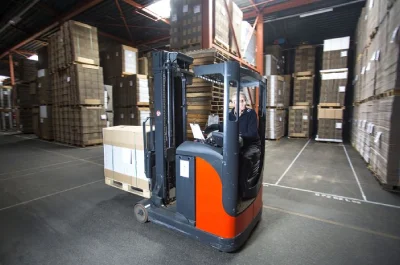Receiving invoices for cargo consolidation often causes confusion, as there are various accessorial charges that not many are aware of or understand. One of these charges is the pallet exchange fee.
A pallet exchange fee is a fee that a carrier charges to the cargo owner for keeping their pallets, in the event that their appointed trucker does not bring their own upon cargo collection. This generally occurs for air freight or LCL sea shipments.
In this article we’ll be exploring the concept of pallet exchanges and the reasons why carriers charge for this. Further below, you’ll also find a guide on how to avoid pallet exchange fees from carriers.
When Does a Carrier Charge a Pallet Exchange Fee?
Pallets are a common way to transport cargo in containers and Unit Load Devices (ULD) via sea freight and air freight respectively. They allow for faster handling and moving cargo in and out of containers.
In a typical scenario where shippers export cargo using an FCL container, the pallets that are being shipped in the container belong to the shipper. In most cases, the cost of the pallet has already been accounted for in the sale price of the goods.
However, this is different when it comes to cargo consolidation through less-than-container load (LCL), buyer’s consolidation (BC) or air freight shipments. The carrier will usually receive loose or palletized cargo from local vendors before consolidating them.

When consolidating cargo, the carrier or freight forwarder may return the pallets to the trucker. If they do that, they will have to use their own pallets for cargo consolidation in the container freight station (CFS) or at the airport consolidation center.
At the destination, the carrier moves the import container or ULD to the deconsolidation facility, where the consignee’s trucker picks up the cargo. When the appointed trucker of the consignee brings his own pallets, the cargo is transferred from the carrier’s pallet to the trucker’s pallet. No pallet exchange fee occurs here.
However, if the trucker picks the cargo up and does not bring their own pallets, the carrier has to give up theirs, so that the trucker is able to transport the goods to the consignee. In order to account for these pallets, the carrier will charge a pallet exchange fee.
How Much is the Pallet Exchange Fee?
Pallet exchange fees vary by carrier and location. Carriers who tend to charge a separate pallet exchange fee will bill this as a destination fee to the cargo owner (most often the consignee). The typical pallet exchange fee ranges between $3.00 to $10.00 per pallet, and is meant to account for the cost of the pallet.
Does Every Carrier Charge a Pallet Exchange Fee?
Charging for pallet exchange fees is still an existing industry practice by certain carriers and freight forwarders. It acts as a mechanism to recuperate the cost of pallets, which carriers are exposed to when they give up their pallets.
Oftentimes carriers already factor this in when consolidating LCL or air freight cargo and bundle this into their CBM (cubic meter) rates.
How to Avoid or Reduce Pallet Exchange Fees
There are certain ways to plan shipments that help you reduce or in best case avoid the pallet exchange fee altogether. Let’s explore these 3 tips in more detail.
1. Consolidating Cargo to Fill an FCL Container
The benefits of consolidating cargo is that it’s more cost effective if you aren’t able to fill an entire container. However, it may be useful to evaluate whether you are able to have the shipper hold and ship your cargo if you are able to use an entire FCL container instead of shipping frequent LCL cargo.
This would mean that the carrier or freight forwarder would not have to use their own pallets when consolidating your cargo. However, it’s important to note that it’s not often that easy. Here, it’s best to do a case or network study to compare the costs of freight vs paying additional pallet exchange fees.
2. Negotiating Lower Rates
Pallets may be relatively cheap on a per piece basis but may quickly add up, if you are shipping larger volumes. If you have a good business relationship with carriers, it may be a good idea to negotiate for better pallet exchange fees, or even to suggest having them waived completely, depending on your volume and overall business with your carrier.
3. Use Your Own Pallets
It’s more economical for you to use your own pallets, since there is no markup involved. Large businesses with intercompany shipments should consider using their own pallets instead. This can save them a lot of money long term.
Pallets are generally very durable for long term use and can be bought either new or refurbished. If pallets get damaged due to wear and tear, these can be fixed for a minimal fee instead of having to replace them with a new pallet, which a carrier on the other hand may do.
Another suggestion would be to use your shipper’s pallets instead of the carrier’s. Shippers can generally have this cost accounted for in the order invoice. They are usually able to do this for a much lower rate, especially if you purchase in bulk.

Get Free Course Access
If you enjoyed the article, don’t miss out on our free supply chain courses that help you stay ahead in your industry.

Andrew Lin
Co-Founder & Writer
at freightcourse
About the Author
Andrew is a multi-business owner with over 12 years of experience in the fields of logistics, trucking, manufacturing, operations, training, and education.
Being the co-founder of freightcourse has given him the ability to pursue his desire to educate others on manufacturing and supply chain topics.
Follow us